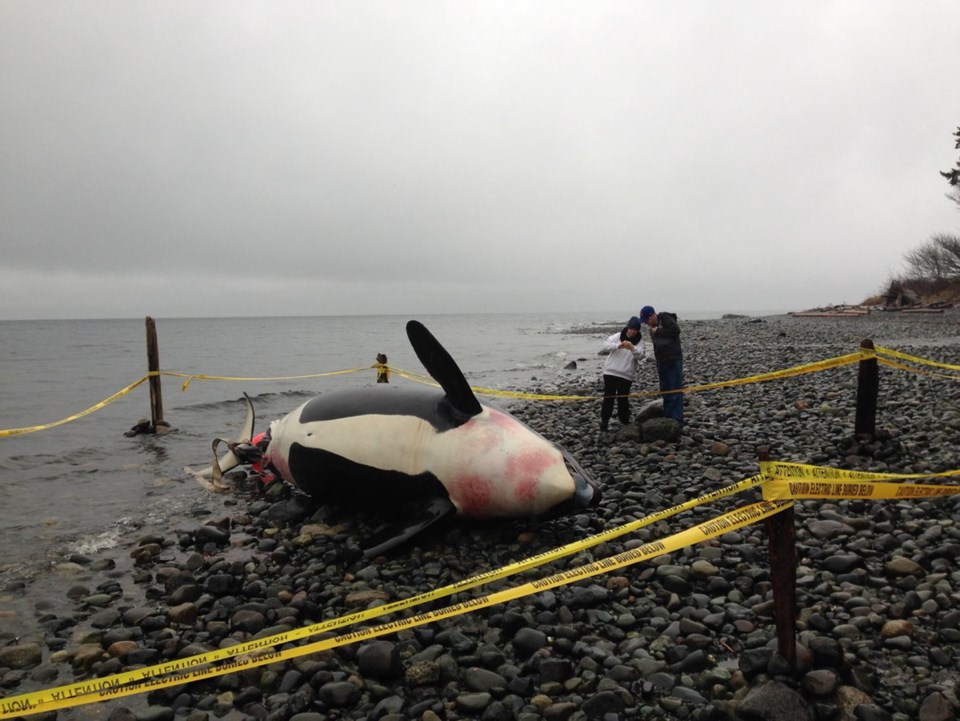A 19-year-old orca whose body was found last week off Courtenay had a near full-term fetus disintegrating in her uterus, says a preliminary necropsy report from the Center for Whale Research.
It appears the fetus died some time before the mother, said Kenneth Balcomb, executive director and principal investigator at the centre in Friday Harbor, Washington. The mother’s death was probably caused by difficulties trying to expel the fetus, he said.
Balcomb was present Saturday at the necropsy performed on the whale, known as J-32 or Rhapsody, by Dr. Steven Raverty, a veterinary pathologist with B.C.’s Ministry of Agriculture.
In his preliminary necropsy report, published on the centre’s website, Balcomb said he believes the whale probably died Dec. 3. The whale’s body was spotted by Courtenay residents on Dec. 4.
During the necropsy, Balcomb observed that the whale’s blubber layer was relatively thin and dry of oil, indicating that J-32 existed on an inadequate diet for an extended period. He noted that her spleen was enlarged and there was an enlarged lymph node adjacent to the uterus, which suggests something had been wrong for a while.
Her reproductive organs have been sent to Vancouver for analysis. Tissue samples were taken for analysis, Balcomb said.
J-32’s death doesn’t bode well for the population of southern resident killer whales, which has only about 12 reproductively viable females, Balcomb said.
Balcomb wants the U.S. and Canadian governments to curtail the harvest of fish to ensure adequate supplies of chinook salmon, the orcas’ preferred food.
“I think we must restore abundant healthy prey resources as soon as possible if these whales are to have any chance of avoiding extinction. The critical point for their recovery may have already passed.”



